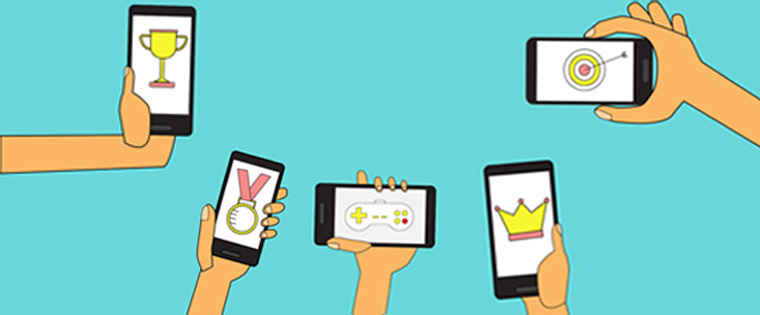5 Fine Tips to Design Gamified Sales Training

Sales and service teams don’t have a lot of time to spare for training from their busy work engagements. They are often mobile, meeting prospects to reach their sales targets. When they take a training, and it is not engaging, they won’t be interested in it. How do we get their attention? How to design interesting and engaging sales training courses? May be incorporating game elements can attract and create the needed enthusiasm. Here are five practical tips to design gamified sales training.
→ Download Now: Instructional Design 101
1. Too Easy or Too Hard Won’t Work
Your gamified sales or service training shouldn’t be so easy so that it appears childish to your employees. If you make the play too hard, sales reps/service technicians won’t be interested. So get the playability right to make your sales training more playful.
For instance, when learners are new to the gamified training, to encourage them to go through the course, offer ‘hints’ in the form of ‘life-lines’ for the first 3-5 efforts. In a way, this approach won’t reduce the difficulty but adequate support is provided.
Some examples for life-lines you can think of are: ‘Stop the clock’ – gives the learner extra time, ‘Time Machine’ – a chance to repeat the question, if it’s in a scenario format or in the form of voice instructions, ‘Show me’ – Short demos on how to do the procedure, if it’s for service technicians.
2. Make it Goal-Driven
Sales teams are always goal-driven: reaching targets, winning the sales pitch, handling the prospect’s objections successfully, persuading potential customers, and more.
So, make your gamified sales & service training goal-driven. For example, if a sales rep answered a potential customer query correctly, give him/her points or powers. Give badges on the completion of the course. However, keep the goals realistic. Scenario-based games and video-based games work better for sales training purposes.

Instructional Design 101
A Handy Reference Guide for eLearning Designers
- eLearning standards
- Streamlined instructional design process
- Effective assessments
- And More!
3. Allow to Make Mistakes & Show Consequences
Allow learners the freedom to make decisions based on the given situations; however, finally show them the consequences of their actions.
If you apply this to a sales training game, let your sales reps make mistakes, for example, by selecting the wrong sales pitch, asking an incorrect question, not handling the customer’s objection properly, and promoting the product and explaining its benefits without asking the needs of a prospect. Show them the consequences in the form of a negative score for incorrect responses and bonus score for reacting properly; some more consequences in the form of making a sale or losing the deal.
4. Incorporate Elements of Competition
Score, the comparison between peers, leading, trailing, and winning factors will be there in every game. Sales reps like to see their scores, and want to know their position among others, expect rewards; so include these elements with the help of a leaderboard in your gamified sales training. You can do this directly within the game or in the Learning Management System (LMS). Giving incentives and badges to winners will benefit them and serve as recognition.
5. Collaborative Gaming
Sometimes, playing the game in isolation may be boring. Your learners may prefer to play with others in a group, or against others/groups. You can add several players to your gamified sales training to play in groups or individually against others.
For example, you know the game ‘Pokémon Go’ created a sensation. Its success was based not just on augmented reality and location-based game, but on its collaborative features. Players can play this game in isolation or in groups. This group can be your friends, acquaintances, other players in the same geo-location. Likewise, in gamified sales training, you can have exercises/assessments to be attempted by a group of 2-3 sales reps collectively.
Hope these tips will help you design your gamified sales training better. I believe you won’t forget to have HTML5 output and responsive design, so it works on multiple devices. So, it’s all set for your sales training game..!!





